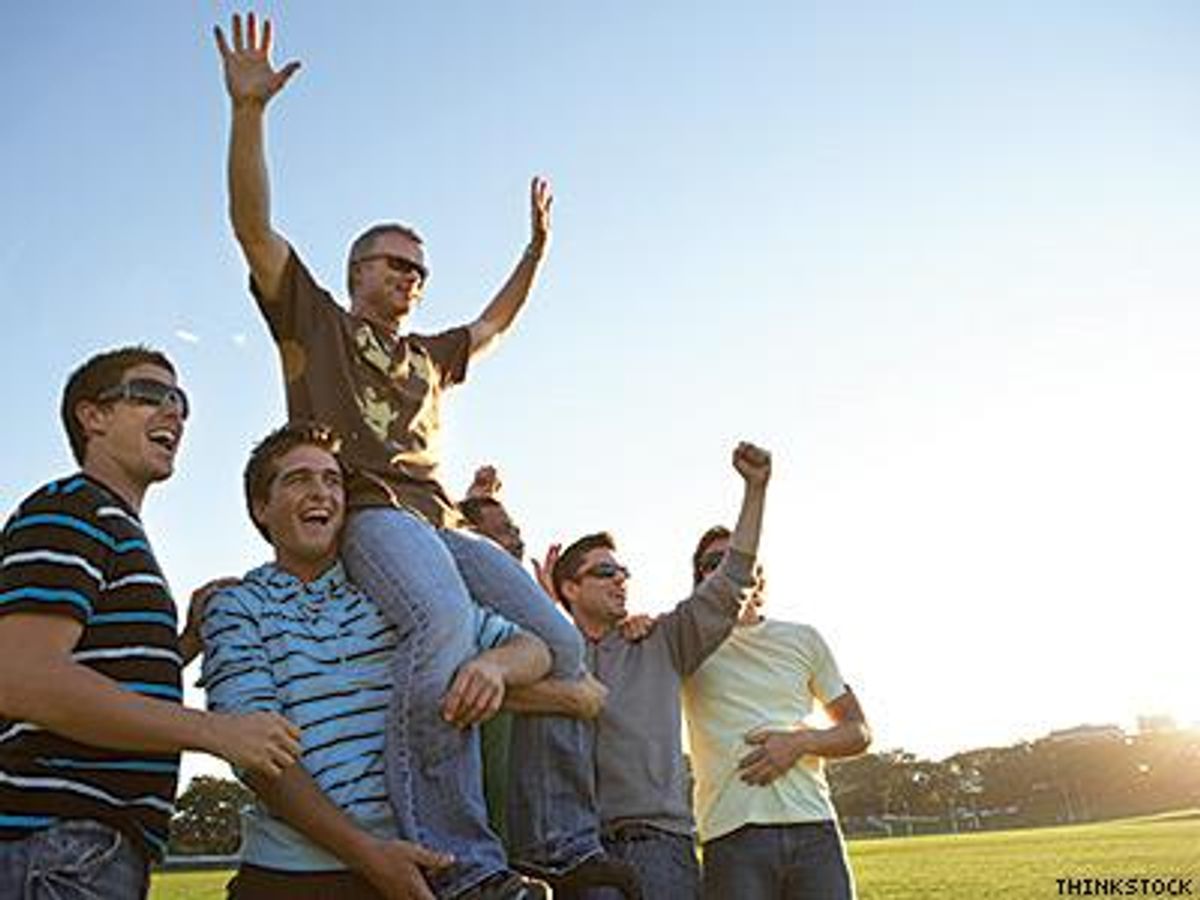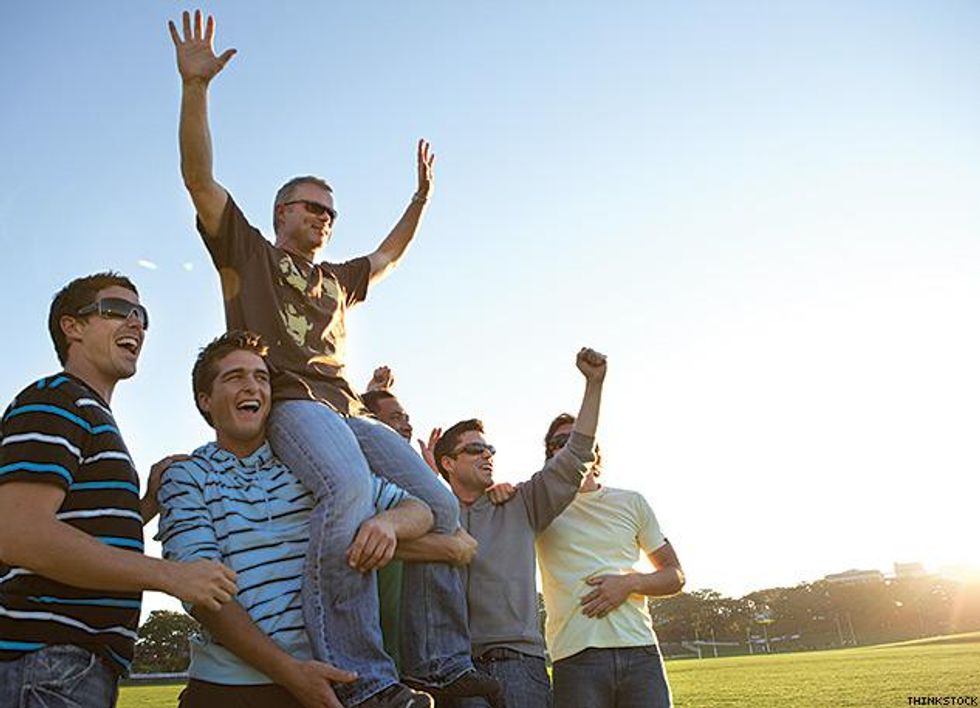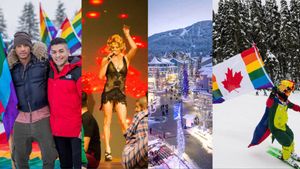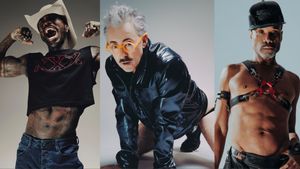
“So, what is it that’s bullying, breaking, shaking, scaring, scarring, stimulating, exciting, inspiring, and firing you up today?”
That is how I start each of my 50-minute therapeutic sessions. I know it may sound overwhelming, having your therapist ask you nine conflicting questions the very moment you sit down in the chair — but that’s exactly the point. Life itself is overwhelming on a regular basis, and where else better to discuss this crazy, clashing world in which we live than in one’s individual therapy sessions?
As a psychotherapy trainee with specializations in gay-affirmative and HIV-positive therapy, I have come to learn that the weekly sessions I spend with my clients are not only meant to delve into the muck and mire of our problem-saturated lives. We must also come together to celebrate even the most seemingly mundane of milestones, breakthroughs, and accomplishments.
The importance of operating with this sort of therapeutic duality has never been better affirmed than in my current work at Being Alive. Opened in 1986 by three friends living with AIDS, Los Angeles’s first peer-led HIV agency began as a “dying with dignity” grassroots initiative. However, as treatment options have improved over the past 30 years — greatly lengthening and improving the quality of life for those who are HIV-positive — the organization has morphed into a beacon of support and empowerment for thousands of gay, bisexual, and queer-identified men within the community. Each day, as I bustle through the halls of Being Alive, I see us celebrating just that, not only surviving but thriving — and being alive!
My individual clientele has proved to be extremely diverse, ranging from members of the Hollywood elite to well-known LGBTQ activists to those struggling with basic needs. Within the quiet, confidential walls of therapy room number 7, I define the psychological work we do as a brave and bold coauthorship. When my clients cry, I cry; when they rejoice, I fill with joy. And when they explode with hurt and rage, I do my best to hold a safe space for a corrective experience that makes way for future healing. I’ve seen addicts get sober, shut-ins step out into the world, and those who proclaim to be lost pave a fulfilling future for themselves. Yet there is one problem that many of my clients cannot seem to shake: the feeling of isolation.
As a gay man myself, I must admit that my own lived-in experiences within the West Hollywood community have been colored with similar shades of loneliness. How many times have I stood in a crowded gay bar and yet felt totally isolated? A lot. How often have I walked through the gym locker room and felt insidiously inadequate? Many. And how regularly do I walk down Santa Monica Boulevard and make eye contact with men I’ve seen a million times, only to be ignored once again? Trust me, it happens daily.
In my one-on-one conversations with clients, I have found that their WeHo experiences are no different. And when one adds serophobia — the manifestation of fear, aversion, exclusion, and discrimination toward those living with HIV or AIDS — to the mix, the results prove psychologically devastating. In my professional opinion, we do not discuss this enough, the veiled but deep-seated anxiety many HIV-negative men feel toward their HIV-positive counterparts. As one of my clients put it, “There is a poz panic in the gay community, but we’ve gotten too PC to talk about it!”
I have witnessed firsthand how years — and in some cases, even decades — of this unspoken panic have led to deep depression, bankrupt self-esteem, and long stretches of often self-imposed isolation. Too many times I’ve seen my most dynamic clients sitting silently in the Being Alive lobby; although surrounded by a dozen men who are also HIV-positive, they are too afraid to engage them.
Why is that? It is because society has conditioned many of my clients to believe that being rejected by another man — whether HIV-positive or not — is not only a possibility but a probability.
And it is that internalized schema that raises the question — what can we, as mental health professionals, do for our most marginalized clients? While individual therapy holds the space for the building of vital ego-strengthening, what good are those psychological coping skills it if they don’t translate into the real world?
A long discussion with my fellow trainees birthed the idea that I should start a support group to address the issue of alienation for our positive clientele; and while it seemed like a logical solution, I must admit the idea did not wholly thrill me. I have participated in traditional group work as a patient, and my experience mirrored what you often see in cliché Hollywood movies — men sitting in a circle, crying about how life has wronged them, all the while binging on cheap coffee during multiple smoking breaks.
I had to wonder, when did gay-affirmative group therapy work lose its fabulousness — the laughter, the fun, the flirtation? We are a resilient population with a unique spirit, eros, and essence — why wasn’t that incredible awesomeness the primary driver of group gatherings? Was it ever? And if not, why shouldn’t we, as the next generation of mental health professionals, begin such a trend?
And thus Building Brotherhood was born. I pitched it to my supervisor as “a gathering for HIV-positive men that gives voice to our unique stories, while offering witness from those that have experienced similar discrimination, trauma, hardships, successes, and victories. Through psychoeducation, art, gay mythology, interactive activities, sharing circles, and role-play, we will aim to build lasting connections and affirm the fact that we are not alone; even in our darkest moments, we are never alone.”
I envisioned our weekly two and a half hours together as a “reeducation in fabulousity and friendship.” Sex and queer culture would be celebrated; Broadway and Beyoncé’s attempt at bangs would be debated. But most importantly, we would talk less and do more; and by doing rather than talking, I quite literally mean that we would be up on our feet and engaging in hands-on, interactive tasks that challenged the problems that HIV-positive individuals wrestle with on a regular basis.
Take, for example, week 5: the Oppression Olympics. Imagine, rather than sitting in a circle and discussing heteronormatively entrenched societal phobias, we play an interactive fantasy game. Think Survivor meets Big Brother with political twists and turns. Picture men divided into teams, clandestinely hiding in therapy rooms, building alliances, and debating whether they should share resources with the opposing teams or crush them for personal gain. They are forced to decide whether they, as the oppressed, become the oppressors or unite and buck the system.
Envision week 7: Speed Friending. Tonight there’s no focus on love, dating, or happily ever after, but rather how you convey your inner essence, those things that make you uniquely you, to another man in no more than three minutes? And go!
Picture week 3: Tell Off Theater. You select a family member, an ex-boyfriend, or someone else from the past who has rejected you. Then you pick a fellow group member to role-play that person. Together you enact the most dramatic soap opera imaginable, and you verbally unload all of those zingers and stingers you wished you’d said. (We might even try it with costumes!)
Imagine participating in these therapeutically based activities with a queer twist, while we facilitators also hold a space for our brothers to step into the room and say, unabashedly and without shame, “I am lonely.” “I haven’t left my house in six days.” “I’m feeling weaker, not healthier.” “I am lost.” “I need help.” Visualize what gay-affirmative and HIV-positive group therapy would look like if the process championed resiliency as much as oppression, focused on affirmation rather than frailty, and reframed feelings of alienation not as a problem but as the first steps on a journey to building lasting friendships.
My cofacilitator, Colin Stack-Troost, and I launched Building Brotherhood last October; 10 intrigued men signed on to give our “reeducation in fabulosity and friendship” a try—and the results have inspired me deeply, both personally and professionally. It’s not my place to relay what goes on within the confidential space that we hold in the Being Alive green room; however, I can tell you that the desserts we bake for each other are delicious, the opinions we voice are fierce, and the uncensored conversations we have about life and love would surely put any Sex and the City episode to shame. We’ve become a queer family of sorts, a fellowship that reaffirms the best parts of each other. I think one of our participants put it best during our checkout; when asked how he was feeling in one word, he said, “It’s not really a feeling and it’s not one word, but the truth is, I finally feel like I matter.”
And for me, as both a clinician and a brother, that’s the sole measure of therapeutic success. Because the truth is that living with HIV will bully, break, shake, scare, and scar our clients on a regular basis. The question is — what do we, as mental health professionals, do about it? I encourage us to stop talking, start doing, and celebrate fabulousness by building brotherhood. Only then will our clients truly understand that they are not alone; even in their darkest moments, they are never alone — and sometimes that’s all they need to know.
For info on Michael Anthony-Nalepa’s therapeutic work, visit IAmAnonymoUS.org or contact him directly at MNalepa@antioch.edu. For more on Building Brotherhood program, contact Being Alive at (323) 874-4322 or info@beingalivela.org.
















































































